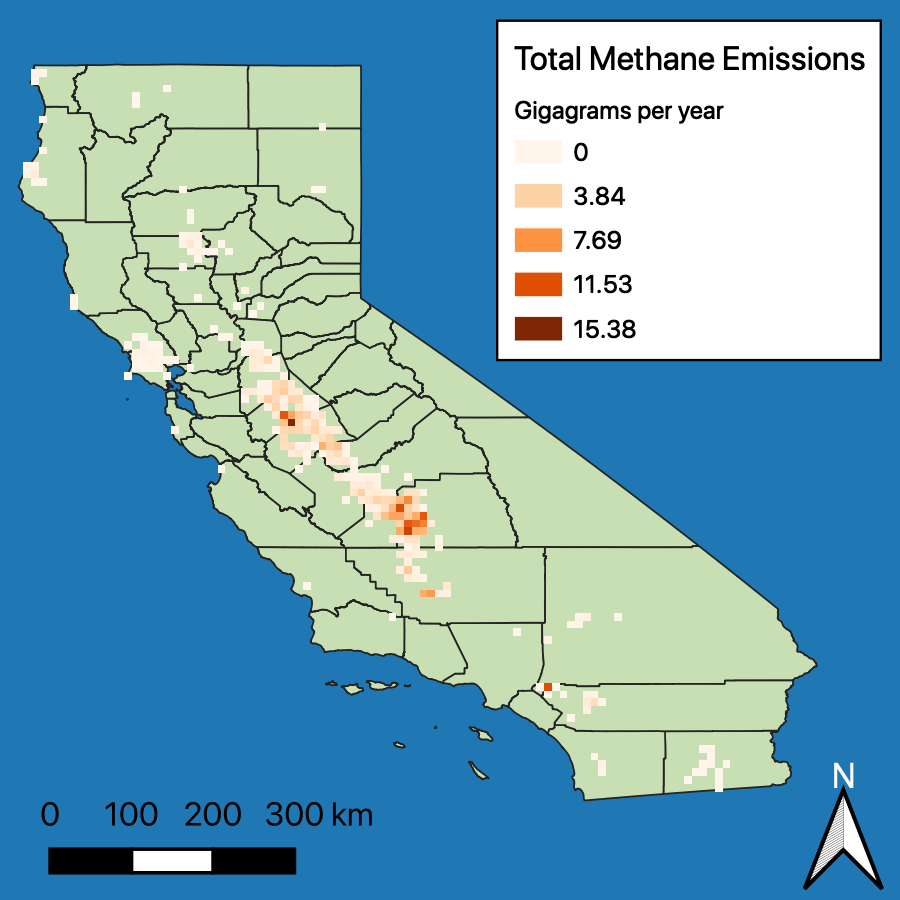Methane Emissions from Dairy Sources (Vista-CA), State of California, USA, 2019
This dataset from the North American Carbon Program (NACP) provides gridded estimates of methane (CH4) emissions from dairies in California at an approximately 10 km x 10 km resolution for the year 2019. The mapped sources of dairy CH4 emissions are enteric fermentation and manure management reported in gigagrams per year (Gg/yr). The sum of the two sources is also provided. These data are in the succession of spatial datasets know as Vista California (Vista-CA) that have identified and classified potential methane source emitters in California and were created utilizing an assortment of publicly available data sources from local, state, and federal agencies. This dataset can serve as a planning tool for mitigation, a prior for atmospheric observation-based emissions estimates, attribution of emissions to a specific facility, and to validate CH4 emissions reductions from management changes.
The NACP is a multidisciplinary research program designed to improve the understanding of North America's carbon sources, sinks, and stocks. The central objective is to measure and understand the sources and sinks of Carbon Dioxide (CO2), Methane (CH4), and Carbon Monoxide (CO) in North America and adjacent oceans. The NACP is supported by a number of different federal agencies.
Additional data from NACP and other relevant links can be found on the ORNL DAAC's NACP Project Page.
Data Citation: Marklein, A.R., D. Meyer, M.L. Fischer, S. Jeong, T. Rafiq, M. Carr, and F.M. Hopkins. 2020. Methane Emissions from Dairy Sources (Vista-CA), State of California, USA, 2019. ORNL DAAC, Oak Ridge, Tennessee, USA. https://doi.org/10.3334/ORNLDAAC/1814

